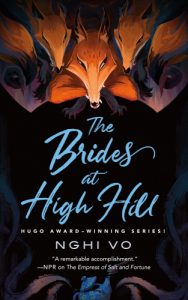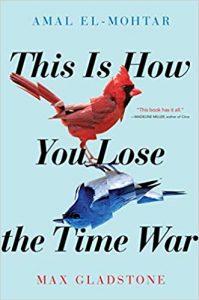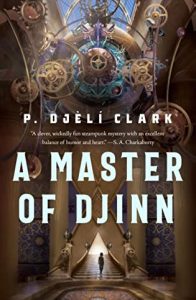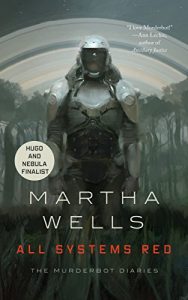 The Bloodless Princes (The Fireborne Blade, #2) by Charlotte Bond
The Bloodless Princes (The Fireborne Blade, #2) by Charlotte Bond Format: eARC
Source: supplied by publisher via Edelweiss
Formats available: hardcover, ebook, audiobook
Genres: dragons, fantasy
Series: Fireborne Blade #2
Pages: 160
Published by Tordotcom on October 29, 2024
Purchasing Info: Author's Website, Publisher's Website, Amazon, Barnes & Noble, Kobo, Bookshop.org, Better World Books
Goodreads
Orpheus meets A Natural History of Dragons in a tale of death, honor and true love's embrace.
It seemed the afterlife was bustling.
Cursed by the previous practitioner in her new role, and following an... incident... with a supremely powerful dragon, High Mage Saralene visits the afterlife with a boon to beg of the Bloodless Princes who run the underworld.
But Saralene and her most trusted advisor/champion/companion, Sir Maddileh, will soon discover that there's only so much research to be done by studying the old tales, though perhaps there's enough truth in them to make a start.
Saralene will need more than just her wits to leave the underworld, alive. And Maddileh will need more than just her Fireborne Blade.
A story of love and respect that endures beyond death. And of dragons, because we all love a dragon!
My Review:
The road to hell isn’t paved with good intentions – it isn’t paved at all. Instead it’s a dropkick off of a VERY high bridge into a pit that the evil exilarch from The Fireborne Blade is trying to avoid by dragging his successor, Saralene, into the afterlife in his place.
This follow-up to The Fireborne Blade is a book that this reader never expected at all. Because at the end of The Fireborne Blade it seemed like the story was all wrapped up.
The dragon was dead, to begin with.
The dragon was dead, the disgraced knight Maddileh was redeemed, the Fireborne Blade was restored, the evil exilarch was dead, Maddileh’s betraying, body-stealing squire was dead – in exchange for Maddileh herself – and the true High Mage Saralene is back on her throne and in her office, with Maddileh as her bodyguard and captain.
All is right with their world – or would be if all of the above were as true as Maddileh and Saralene believed them to be at the end of that first book.
The adventures of this second book are necessary because those things are not true. In fact they are mostly not true. Especially the parts that have the worst potential outcomes.
The dragon is not really dead – only hibernating. The evil exilarch is dead – but he’s scheming from the afterlife to take Saralene’s body and her position and go right back to being the oppressive tyrant he was when he was alive. Because he will be. Again.
Unless Maddileh and Saralene can stop him – with the surprisingly willing assistance of the dragon they believed they killed.
All they have to do is convince the ‘Bloodless Princes’ who control the Underworld to let Saralene go – before she’s dead forever.
 Escape Rating A-: The pattern of the way both books in this series are written is fascinating and more than a bit different. This story – as did The Fireborne Blade – works on two tracks that feed into each other in ways that the reader does not initially expect.
Escape Rating A-: The pattern of the way both books in this series are written is fascinating and more than a bit different. This story – as did The Fireborne Blade – works on two tracks that feed into each other in ways that the reader does not initially expect.
A piece of this story is told through tales that are myths and legends to Maddileh and Saralene – and then the actions they are actually performing move the story forward. Then it circles back to more legends – which inform the action to come.
What made the tales part of the action work was that those tales are told from two perspectives, the human and the dragon. Those points of view permeate these stories that talk about the same basic event but come to rather different conclusions and teach different lessons beyond the obvious one that whoever controls the recording of history sets the agenda for what history is believed to be – as opposed to what it really was.
All of which comes fully into play when Maddileh, Saralene and the dragon Mienylyth reach the Underworld, because the legends of the ‘Bloodless Princes’ have conflated order with good and chaos with evil, when in truth a LOT of time has passed, both princes’ attitudes have become set in very hard stone and either condition taken to extremes is no good for humans or other thinking creatures.
The whole, entire story kicks off with Maddileh and Saralene learning that the righteous ending they believed they’d earned at the end of their first adventure wasn’t an ending at all. This second adventure takes that fruit-basket upset and turns it into a story of adventure and upended assumptions that crosses the Greek myth of Orpheus and Eurydice with Lady Trent’s memoir, A Natural History of Dragons (by Marie Brennan) and turns it into a romance of longing and unfulfilled hopes and dreams that can only become an HEA if all the characters hold true to their oaths and their promises.
As much as the story is told from Maddileh’s and Saralene’s perspectives – as much as their human hopes and dreams drive the narrative forward – it’s the lonely dragon Mienylyth who steals the story and the reader’s heart.
I think this is the end of this saga – but then I thought that last time. If we get to see more of Maddileh and Saralene after all, I really hope that Mienylyth flies back as well. Because she was absolutely chock full of awesome – even when she was pretending to be a cat.

 The City in Glass by
The City in Glass by  Escape Rating B: I picked this book up because I love the author’s
Escape Rating B: I picked this book up because I love the author’s  While Vitrine goes through all the stages of grief and he tries to ‘help’. And fails. Badly, frequently and often.
While Vitrine goes through all the stages of grief and he tries to ‘help’. And fails. Badly, frequently and often. Haunt Sweet Home by
Haunt Sweet Home by  Time's Agent by
Time's Agent by  The Dead Cat Tail Assassins by
The Dead Cat Tail Assassins by  Escape Rating A+: I picked this up because I adored the author’s
Escape Rating A+: I picked this up because I adored the author’s  Navigational Entanglements by
Navigational Entanglements by  Escape Rating A-: I grabbed this book because I’ve been picking my way through the author’s vast, sprawling,
Escape Rating A-: I grabbed this book because I’ve been picking my way through the author’s vast, sprawling,  In the Shadow of the Fall (Guardians of the Gods, #1) by
In the Shadow of the Fall (Guardians of the Gods, #1) by  Something which I’m sure is intended to happen in the second book in the duology,
Something which I’m sure is intended to happen in the second book in the duology,  Unexploded Remnants by
Unexploded Remnants by  Service Model by
Service Model by  Escape Rating A+: I went into this completely unsure of what to expect, and that blurb of
Escape Rating A+: I went into this completely unsure of what to expect, and that blurb of  The Fireborne Blade (The Fireborne Blade, #1) by
The Fireborne Blade (The Fireborne Blade, #1) by  Escape Rating A-: Initially, this seemed like a rather traditional knight vs. dragon story, with one of two inevitable endings. Either the knight dies or the dragon does. Or occasionally both in a blaze of mutual glory. So there’s three inevitable endings.
Escape Rating A-: Initially, this seemed like a rather traditional knight vs. dragon story, with one of two inevitable endings. Either the knight dies or the dragon does. Or occasionally both in a blaze of mutual glory. So there’s three inevitable endings. And in the process of telling its story about the knight and the dragon, it asks some surprising questions about change vs stability and striking that balance, and makes that discussion personal in ways that change every single thing we thought we knew going in.
And in the process of telling its story about the knight and the dragon, it asks some surprising questions about change vs stability and striking that balance, and makes that discussion personal in ways that change every single thing we thought we knew going in.